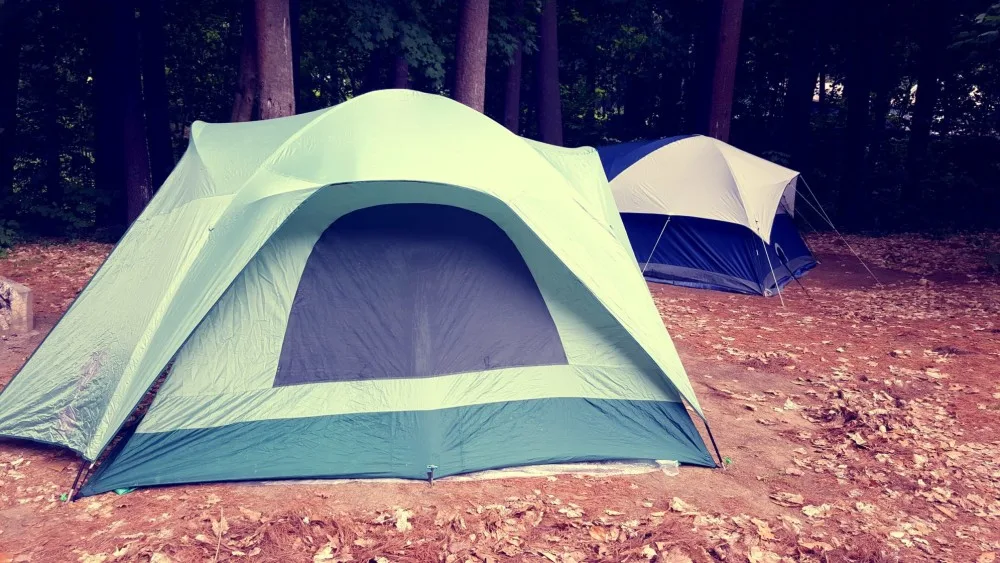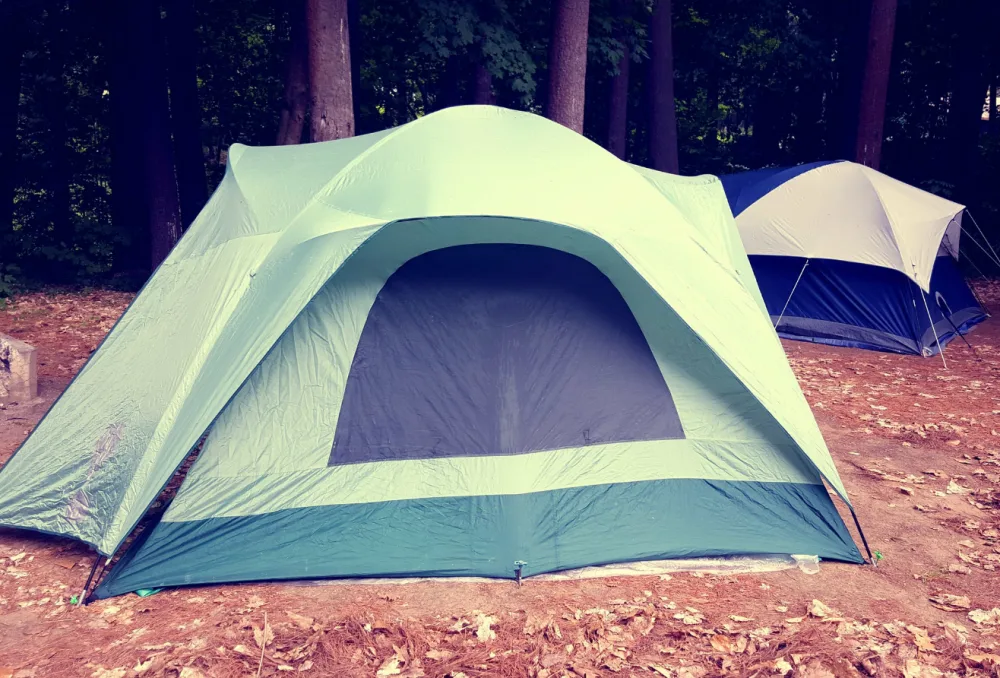
How to deal with camping in the rain

(Courtesy: Raj Tatavarthy via Pexels)
Even the most positive people will agree that being wet sucks. In case you find yourself camping on a weekend when the rain just won’t let up, here are some tips to make the most of it.
PRACTISE PITCHING YOUR TENT
Knowing how to set up your tent before having to do so in the pouring rain will make things a little less miserable. Quickly throw it up in your backyard before your trip, so you can be sure you have all of the pieces. When you do reach your campsite, don’t skimp on set up—you’ll regret it later. Use tent pegs and guy lines to pull the fly material away from the tent and peg the corners in to prevent pooling.
REACH HIGHER GROUND
An obvious choice when you think about it, but pitching your tent on high ground is always the best practice. Don’t pick a flat area at the bottom of an incline—it’s prime location for gathering running water. Find the high spot of your campsite and pitch the tent there. You don’t have to go so high that you’re above the treeline, but high enough that a stream doesn’t start flowing through your tent.
WATCH BELOW: WAYS TO WEAR YOUR RAIN BOOTS BETTER FOR HAPPIER FEET
BRING TONS OF TARPS
Any seasoned camper will tell you that tarps are key to survival—you can never have too many. They don’t need to be fancy brand-name tarps from a special camping store, almost any will do. Be sure to lay one beneath your tent. If it rains so much that the ground becomes saturated, this layer will prevent water from seeping into your tent. It can also serve as a doormat for your wet shoes and socks. Throw another tarp over your tent. You can either drape it directly on the tent, or use some ropes to create an A-frame over everything. The more protection the better, but make sure to leave some room over the tent doors and windows for ventilation.
You’ll also want a dry area where you can stand up, cook, and enjoy the stormy outdoors—another perfect use for a tarp. Use trees and ropes or straps to tie it down, creating an awning over a picnic table and your camping gear to help keep it dry.
USE A DRYBAG
A drybag is a common piece of gear for anyone who’s done much canoeing or kayaking, and it’s always useful. In a pinch, sealable plastic bags will also do the trick. If you and your gear are likely to get wet before setting up, protect your sleeping bag, mattress, and sleeping clothes first. A dry sleeping bag is the key to happiness, so wrap it all up in a dry bag and don’t open it until your tent is up.
STAY AWAY FROM COTTON
Don’t wear cotton or jeans. Quick-drying clothing is best and some rain gear will stop you from really getting wet. A base-layer, like merino wool, will prevent you from getting really cold and if you do eventually get some sun, it will also dry quickly.
DON'T THROW OUT THAT OLD UMBRELLA JUST YET, WATCH THIS TRICK:
BRING BOARD GAMES
If it’s one of those storms that just keeps going and going, you’re going to be spending a lot of time indoors. The more you have to do during this time, the more successful the entire trip will be. Yahtzee, dice, and playing cards always spice up time spent huddling indoors.
FIND SOME SHELTER
If the weather is really extreme with high winds and heavy rains, the more shelter surrounding objects can provides the better. Consider pitching your tent in the leeside of some bushes or large boulders. If you’re car camping, consider using your vehicle as a windbreak.
Many provincial parks have great visitor centres where you can while away some hours, and if everything has really hit the fan, head to the closest laundromat to dry out and warm up.
This article, written by Colin Field, was originally published for Cottage Life.









